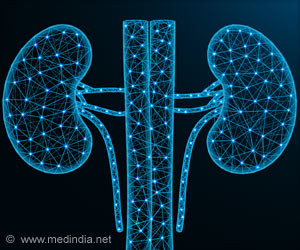
The Union Health Ministry addressed recent media reports claiming that India has a high number of “zero dose children”—children who have not received any vaccines—based on a UNICEF report. The Ministry highlighted that these reports present an incomplete picture of India’s immunization data, as they do not consider the population base and immunization coverage of the countries being compared (1✔ ✔Trusted Source
New UNICEF report shows 12.7 million children in Africa missed out on one or more vaccinations over three years
).
Advertisement
A Broader Perspective on Immunization Efforts
The Ministry emphasized that a comprehensive understanding of the country’s immunization efforts can only be achieved by examining relative data and programmatic interventions. India’s immunization coverage for all antigens is higher than the global average, with coverage for most antigens exceeding 90 percent. This is comparable to high-income countries such as New Zealand (DTP-1 93 percent), Germany and Finland (DPT-3 91 percent), Sweden (MCV-1 93 percent), Luxembourg (MCV-2 90 percent), Ireland (PCV-3 83 percent), and the United Kingdom (RotaC 90 percent).
Advertisement
Comparing Global Immunization Coverage
Even when considering India’s 83 percent coverage for the Pneumococcal Conjugate Vaccine (PCV) – the lowest among the compared antigens—it is still significantly higher than the global average of 65 percent. India stands out as the only country among the compared nations with DTP-1 (Penta-1) coverage above 90 percent. The dropout rate for children receiving the first but not the third dose of DTP (Penta) is just 2 percent, while other countries show a much wider gap. These figures reflect India’s focused programmatic interventions despite its wide socio-geographical diversity.
Advertisement
Zero Dose Children and National Immunization Commitment
Zero dose children in India constitute just 0.11 percent of the total population, underscoring the government’s commitment to expanding the reach and scope of the national immunization program. The Universal Immunization Programme (UIP), the largest public health initiative in the country, targets 2.6 crore children and 2.9 crore pregnant women annually through 1.2 crore vaccination sessions.
For the fiscal year 2023-24, India achieved a Full Immunization Coverage rate of 93.23 percent nationally. Consistent efforts to vaccinate all eligible children have led to a significant reduction in the Under-5 Mortality Rate (U5MR), which decreased from 45 per 1000 live births in 2014 to 32 per 1000 live births in 2020 (SRS 2020). Since 2014, six new vaccines have been added to the UIP, enhancing the breadth of protection.
Mission Indradhanush and Beyond
To address zero dose and under-vaccinated children, India launched Mission Indradhanush and Intensified Mission Indradhanush with state support. These initiatives have reduced the number of zero dose children by 34 percent between 2014 and 2023. Across 12 phases of Mission Indradhanush, 5.46 crore children and 1.32 crore pregnant women have been vaccinated.
India administers the maximum number of WHO-recommended vaccines under the UIP compared to most other countries. The national mean coverage of 83.4 percent surpasses the global average by more than 10 percentage points. Furthermore, with high levels of Oral Polio Vaccine (OPV) and Inactivated Polio Vaccine (IPV) coverage, India has maintained a polio-free status for 13 years since the last case in 2011.
In conclusion, the Union Health Ministry’s statement highlights India’s robust immunization infrastructure and its significant achievements in public health, demonstrating the country’s dedication to protecting the health of its population through comprehensive vaccination efforts.
Reference:
- New UNICEF report shows 12.7 million children in Africa missed out on one or more vaccinations over three years – (https://www.unicef.org/esa/press-releases/new-unicef-report-shows-127-million-children-africa-missed-out-one-or-more )
Source-Medindia



